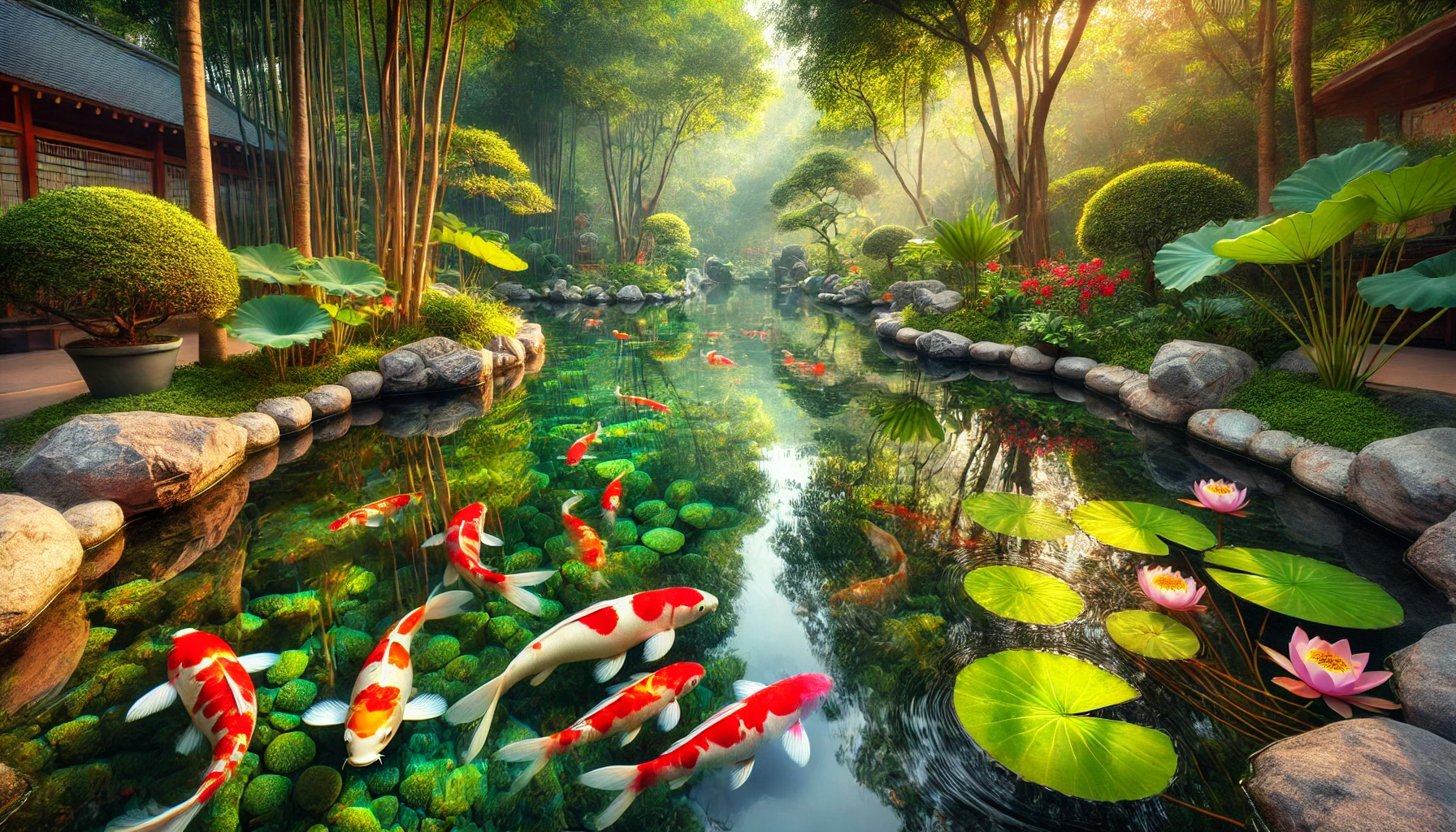Introduction
Did you know that koi fish are more than just beautiful aquatic creatures? They’re steeped in centuries of history, legends, and symbolism! From ancient Chinese myths to their revered status in Japanese culture, koi fish have become global icons of strength, perseverance, and prosperity. Today, let’s dive into the fascinating world of koi fish and uncover the stories that make them legendary. Trust me, it’s a tale worth swimming into!
The Origins of Koi Fish
Koi fish, also known as Nishikigoi, trace their roots back to ancient China, where they were bred from common carp. Around the 17th century, koi breeding gained popularity in Japan, transforming these ordinary fish into the vibrant creatures we admire today. Breeders carefully cultivated different colors and patterns, each carrying unique meanings and significance. Koi fish soon became a symbol of wealth and power among Japanese nobility.
The Myth of the Dragon’s Gate
One of the most famous koi legends originates in ancient China. According to the myth, a group of koi fish swam upstream in the Yellow River, facing powerful currents and cascading waterfalls. When they reached the Dragon’s Gate, a steep and nearly impossible waterfall, only one koi succeeded in leaping over it. The gods rewarded its perseverance by transforming it into a mighty dragon. This story represents the idea that hard work and determination can lead to greatness.
Koi Fish in Japanese Folklore
In Japanese culture, koi fish are deeply tied to the concept of “ganbaru,” which means to persevere or endure. Samurai warriors often identified with koi fish, admiring their ability to swim against strong currents and likening it to their own resilience in battle. During Children’s Day in Japan, families display koi-shaped flags called koinobori, symbolizing the hope that their children will grow strong and courageous.
The Symbolism of Koi Fish Colors
Koi fish come in various colors, each carrying its own symbolic meaning:
- Red (Kohaku): Represents love, passion, and energy.
- Black (Karasugoi): Symbolizes overcoming obstacles and adversity.
- Gold (Ogons): Associated with wealth and prosperity.
- Blue (Asagi): Represents serenity and calmness.
- White (Shiro Utsuri): Signifies purity and spiritual transformation.
These vibrant colors aren’t just beautiful to look at—they tell a story about what the koi represents in your life.
Modern-Day Reverence for Koi Fish
Today, koi fish continue to inspire people worldwide. They’re not only prized in ornamental ponds but also celebrated in art, tattoos, and literature. Many koi enthusiasts see them as living works of art, investing time and care into their upkeep. The story of the Dragon’s Gate serves as a reminder that success comes to those who face challenges head-on.
Conclusion
Koi fish aren’t just ornamental fish—they’re living symbols of resilience, beauty, and transformation. Their journey from humble carp to legendary icons is a testament to the power of perseverance. Whether you’re a koi enthusiast or simply inspired by their story, these legendary creatures remind us to swim against the current and strive for greatness. So, what’s your Dragon’s Gate? Dive into it with the spirit of a koi and emerge victorious!
Got your own koi tale to share? Drop it in the comments—I’d love to hear how these legendary fish inspire you!





